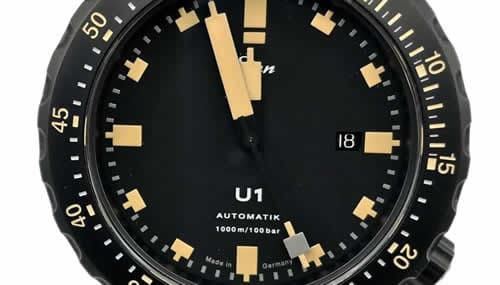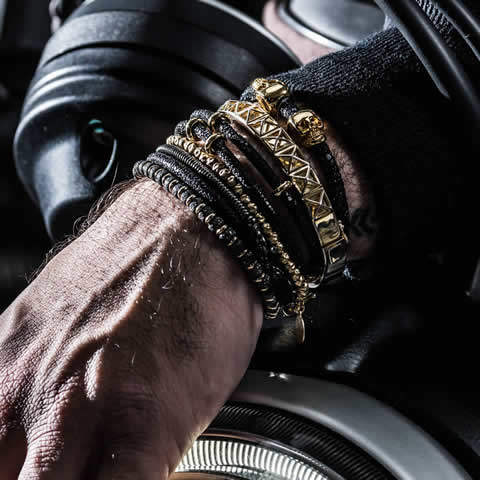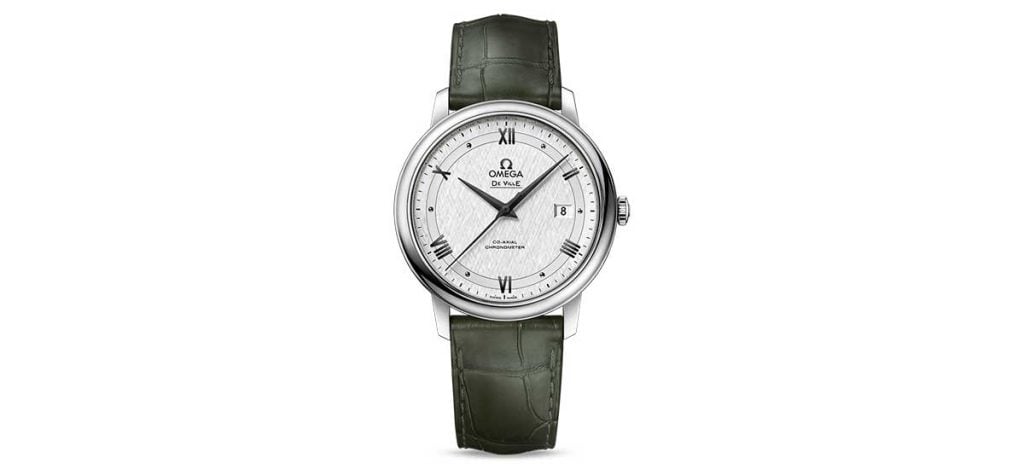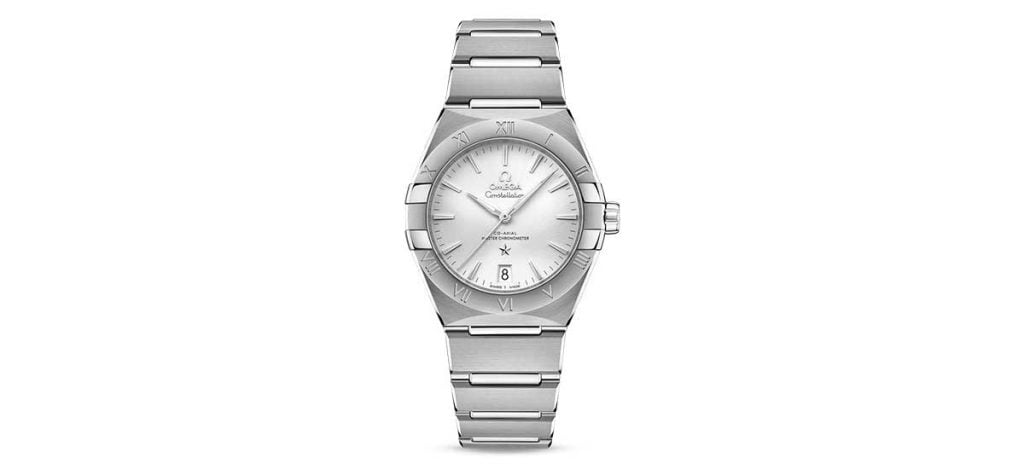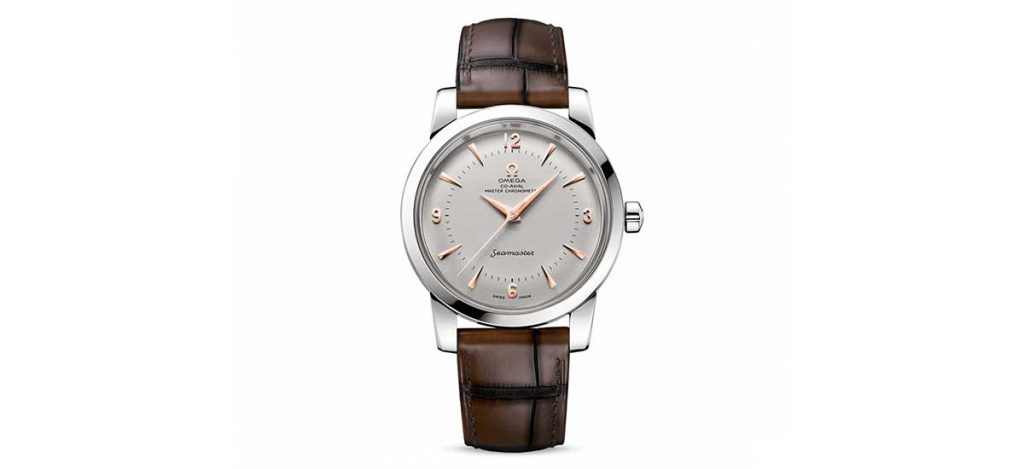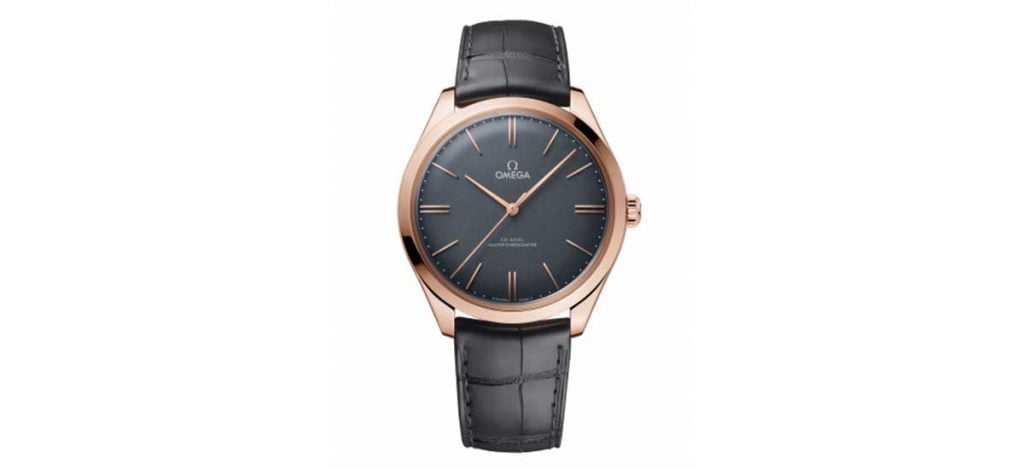
Almost everyone has heard of Omega. You don’t need to be a timepiece connoisseur to be familiar with the Greek letter logo or their storied history; it’s clear Omega’s reputation for precision and luxury extends far beyond the realm of us watch enthusiasts. Part of the reason is the extensive selection of models they have in their portfolio.
The Omega Speedmaster will forever have a place in history as the first watch on the moon, while their Constellation series speaks to those with a love of carefully considered dress watches with tech to match.
Then there’s the Omega Speedmaster collection, a range of durable dive watches renowned for their impeccable design and engineering. With features like robust, water-resistant cases, Master Chronometer-certified movements, and legible, luminous dials, it’s no wonder the Seamaster has captured the hearts of both divers and watch collectors alike.
About The Omega Seamaster 300

The Omega Seamaster collection alone is extensive, but of all the sub-families within it, it’s clear that the Omega Seamaster Diver 300M is a best-seller – and for good reason. The model was first released in 1993 and became quickly known as a solid, easy-to-wear dive watch. In fact, thanks to its durable 300-meter-resistant case, ratcheted bezel, and luminous dial, it was one of the few watches to set the standards for diving timepieces in the 90’s.
Two of its most important features are its unidirectional rotating bezel and helium escape valve. The former allows divers to measure elapsed dive time while under the waves, ensuring they constantly monitor how much oxygen and dive time they have left. Equally, the helium escape valve maintains the Seamaster’s impressive 300-meter water-resistant rating, allowing you to confidently take the watch scuba or skin diving.
But it’s not just its functionality that cemented the Omega Seamaster Diver 300M to become one of the most famous dive watches in history. It’s also an icon on land, being worn just as often as a dress watch or daily beater as a diving instrument. Why? Because of its appearance on none other than James Bond’s wrist.
It started in 1995 when Pierce Brosnan wore one of the first Omega Seamaster 300M Diver watches in “GoldenEye”. It was the beginning of a very special, and as we would later find out a very long partnership.
From that moment forward, an Omega watch has appeared in every James Bond film, with the Seamaster model becoming known as the go-to timepiece for 007. So, as you can imagine, the Seamaster is no longer just popular with aspiring divers but also aspiring secret agents too.
History of Omega Seamaster Watches
Although we’re focusing on the Omega Seamaster Diver 300M model today, it’s still an important exercise to consider where this watch came from and how it became a product inspired by a long line of predecessors. For that reason, let’s go back even further and look at the history of the Omega Seamaster collection as a whole.
The Omega Seamaster watch was first introduced in 1948, a whole 100 years after the company’s founding. At this point, the Swiss watchmaker had already proven they had the ability to create beautiful and functional watches, but they had yet to design anything dedicated exclusively to water sports and diving. So came the Omega Seamaster, a watch designed with underwater exploration in mind.
The first model was named the Seamaster Diver CK and brought together Omega’s military history with a design that – if you ask me – looks more like a dress watch than a diving instrument. But the watch rather ingeniously combined the slender case and timeless dial with a relatively impressive water resistance for its time.
As the decades rolled on, the Omega Seamaster collection continued to evolve, adding in new complications, movements, dial colors, case sizes – you name it. 1957 was a pretty huge year for Omega for a number of reasons, mainly because they launched three models that would all become icons in their own right. This included the Railmaster, the Speedmaster, and the Seamaster 300. The latter advanced the water-resistant rating of its predecessor while still maintaining a balance between functionality and elegance.
The 1960s and 70s saw further innovations including the Seamaster Proprof, a watch designed for professional deep sea divers, and the Seamaster 120, with a more streamlined design and a water resistance of 120 meters. It was models like this that were early indicators that Omega Seamaster watches were here to stay, pushing the boundaries of what dive watches could do.
Then, with the release of the Omega Seamaster Diver 300M in 1993, the Swiss watch brand truly cemented the collection as a flagship series. Adding in ceramic bezel inserts, a helium escape valve and chronometer-certified movements, these dive watches were well and truly equipped to take on the ocean.
Omega Seamaster Diver 300M: In-Depth Review
Before we start with the in-depth review of the Omega Seamaster 300M Diver and its remarkable set of features, it’s important to note the diversity within the lineup. It’s a collection with a variety of models, each with its own unique nuances, but most share a common set of core attributes that define the watch.
Yes, there are models with colorful gemstones on the bezel and even some limited editions engineered entirely from ceramic, but for the sake of today’s review, we’re giving our attention to the classic and permanent fixtures in the Omega Seamaster Diver 300M collection.
Case Sizes & Materials
If there’s one thing that’s consistent throughout the entire Omega Seamaster collection, it’s dimensions. The time-only models measure to 42mm wide with a thickness of 13.6mm and a lug-to-lug of 49.9mm. Meanwhile, those with chronograph complications are a touch bigger – predominantly to make room for the larger movement inside – measuring to 44mm wide, 17.3mm thick, and with a lug-to-lug of 52.8mm.
Both case sizes might sound large, and that’s because they are. That said, the 42mm time-only Omega Seamaster Diver 300M watches do wear more compactly than you might think, thanks to the faceted architecture and sloped lugs. But let me be clear: these aren’t small watches, and I wouldn’t generally recommend them to anyone with wrists smaller than six-and-a-half inches – unless you like the look of an oversized watch, of course.
The protruding element at 10 o’clock does add to the size as well. It’s a feature that’s known to polarize some wearers since it’s not a usual sight on dive watches. This is the helium escape valve, and although it assists in the impressive 300-meter water-resistant rating, it does optically add to the dimensions. The element is decorated with a “He” marking in relief to note its purpose. It sits on the opposite side of the case, opposite the screw-down, polished, and signed crown, which sits at 3 o’clock.
As is the case with most Omega watches, the Seamaster 300M Diver is impressively finished across the case and bracelet with predominantly linear brushing across the surfaces. I particularly love the finishing on the uniquely scalloped bezel.
The slightly sloped finish of the bezel also leads nicely to the domed sapphire crystal glass treated with double anti-reflective coating, which is matched by another layer of sapphire crystal glass on the exhibition case back.
More often than not, the Omega Seamaster 300M Diver is machined from stainless steel, but there are some instances where the case arrives engineered from lightweight titanium or 18ct yellow gold. There are also some models that combine two of these metals together for a striking finish.
Bezel
Alongside the 10 o’clock helium escape valve, the bezel is arguably one of the most defining features of the Omega Seamaster 300M Diver. It is entirely brushed and set with a ceramic insert bezel, often black or blue in color. The insert is decorated with numerals, usually white, and a luminous pip at 12 o’clock.
I have to say, I’ve always found the bezel of the Seamaster a dream to use. It is unidirectional – something that’s essential for divers tracking their elapsed dive time – and is easy to grip thanks to the scalloped edge, even while wearing thick diving gloves. It also has a really satisfying 120-click system.
Dials
Another defining characteristic of the Omega Seamaster over recent years is the dial, which is decorated with a unique horizontal wave pattern. It copies the very same motif seen on the Seamaster 300M Diver worn by Pierce Brosnan in the 1995 James Bond movie “GoldenEye”. And these waves aren’t just merely stamped but meticulously laser engraved to create a cool and mesmerizing textured backdrop.
The dials are crafted from ceramic, found in shades of blue, black, white or gray. For me, the blue ceramic dials are a true classic, again mimicking some of the first Omega Seamaster watches to launch, including the first one to land on the silver screen on Bond’s wrist.
As for hardware, there’s typically a railway-esque style minute track, round bubble-like hour markers, rhodium-plated or gold skeletonized hands with SuperLumiNova, and a date window at 6 o’clock. The chronograph variants also feature two additional subsidiary dials for the small seconds and 12 hours.
Movement
If you’ve been looking for a dive watch for some time, it’s likely you’ve realized that an uncommon sight is an exhibition case back. The Omega Seamaster 300M Diver is one of a few to have one, however. Through the scalloped back, you can admire the Omega Caliber 8800 oscillating within.
This is one of the brand’s movements to feature their famous co-axial escapement which utilizes a three-pallet system rather than a traditional two-pallet system for decreased sliding friction and increased length of service intervals.
The Caliber 8800 is also a Master Chronometer, as certified by METAS, confirming its high levels of reliability and accuracy, and boasts a healthy power reserve of 55 hours. Finishing is also exceptional with spiral waves across the rotor and bridges, plus there’s some beveling and polished screw heads. The movement is also anti-magnetic, offering up resistance to 15,000 gauss.
Meanwhile, the Seamaster 300M Diver Chronographs elect the Caliber 9900, another automatic movement with Master Chronometer certification and a co-axial escapement. These models have a slightly higher power reserve of 60 hours and a higher frequency of 28,800vph compared to the time-only model’s frequency of 25,200vph.
Strap Options
There are a number of handsome strap options to choose from to complete your Omega Seamaster 300M watch. The vertically ribbed rubber straps are an obvious choice for those wanting to test out the diving capabilities of these watches, as they are water and sweat-resistant. The NATO straps are nice for a more relaxed look and help to bring out some of the vintage aspects of the watch’s design.
My favorite strap is the metal bracelet. You can choose from a modern five-row link band with a combination of brushed and polished links or a more retro mesh metal bracelet. Both are completed by folding buckles embossed with the Omega logo in relief.
Most Popular Omega Seamaster 300 Models
As mentioned, there’s no shortage of Omega Seamaster 300 models to choose from in the collection. In fact, there’s such an extensive number that it can be a little overwhelming to know where to begin. To help, here’s the top five most popular Omega Seamaster watches that are definitely worth a longer look…
Omega Seamaster Diver 300M Blue Dial On Bracelet (ref. 210.30.42.20.03.001)
My current favorite Omega Seamaster Diver 300M watch in the collection is this blue-dialed reference. For me, this is the epitome of a Seamaster watch, boasting many of the same elements found on the 1995 reference worn by Pierce Brosnan in “GoldenEye”.
It has the same blue laser-etched ceramic dial with a wave pattern and a ceramic insert bezel to match. The sturdy 42mm stainless steel case offers the familiar 300-meter water resistance, and inside is the Master Chronometer Caliber 8800 movement with a 50-hour power reserve.
Omega Seamaster 300 Master Chronometer (ref. 234.30.41.21.01.001)
If you prefer something with more of a vintage look, don’t be afraid to venture from the Omega Seamaster 300M Diver collection just slightly. In their Seamaster Heritage family, there’s a model named the Omega Seamaster 300 Master Chronometer, which wonderfully brings to life some of the design features of the very first Seamaster watches.
It has a gorgeous retro aesthetic, including a black dial and an oxalic anodized aluminum bezel, both adorned with off-white markings. But don’t let its vintage look put you off; this model is still equipped with some of Omega’s latest technology, including vintage Super-LumiNova, a 41mm stainless steel case, and the Co-Axial Master Chronometer Caliber 8912.
Omega Seamaster Diver 300M Black Dial on Bracelet (ref. 210.30.42.20.01.001)
Another classic, the Omega Seamaster Diver 300M Black Dial, offers all the same tech as the blue-dialed reference previously mentioned above but instead swaps out the blue ceramic on the dial and bezel for black. The black contrasts beautifully against the brushed stainless steel case, which again measures 42mm wide and houses the Omega Caliber 8800 automatic movement.
Omega Seamaster 300M Chronograph America’s Cup (ref. 210.30.44.51.03.002)
Since Omega has played such a pivotal role in the evolution of dive watches, it makes sense they are involved in several water sports, including being the Official Timekeeper of the 36th America’s Cup. This Omega Seamaster 300M Chronograph was launched in honor of the event, and its 44mm wide steel case and blue ceramic bezel were paired with blue and red soft-touch pushers to mimic the livery of the competition. There’s also a regatta countdown indicator ring added in red anodized aluminum and the counterweight of the chronograph seconds cleverly incorporates the American Cup logo.
Omega Seamaster Diver 300M White Dial on Strap (ref. 210.32.42.20.04.001)
Finally, we have the Omega Seamaster Diver 300M with the white dial. Again, this model showcases all the classic features of the time-only reference including a stainless steel 42mm case, 300 meter water resistance and the Omega Caliber 8800. It stands out for its crisp white laser-etched dial which contrasts nicely to the black ceramic bezel insert. It also arrives on a ribbed black rubber strap for a comfortable, casual finish.
Should You Buy An Omega Seamaster Diver 300M?
The short answer is yes, absolutely. The Omega Seamaster Diver 300M is a brilliant watch; it’s not only a fantastic diving watch, offering you all the necessary features for scuba and skin diving, but it’s a handsome daily beater. Remember, you don’t have to be a professional diver for a watch like this.
It’s nice knowing you have a watch that can withstand the rigors that come with diving, regardless of whether you’re someone who’s on, in, or around water a lot. It’s also a handsome design that transitions effortlessly between day and night. It’s a no-brainer in my eyes.
Omega Seamaster 300 Pricing & Availability
The Omega Seamaster 300 retails for $5,600 from authorized retailers like Exquisite Timepieces or can be found on the second-hand market starting from $2,000. While most of the models in the collection are permanent releases, note there are a handful of exclusive limited editions.
Conclusion
I hope you’ve got a better understanding of the Omega Seamaster 300M and can now appreciate its significance and versatility. This watch truly offers everything you’d want or need in a diving watch—exceptional durability, advanced features, and precise performance. Yet, it’s not just a robust tool; it also boasts a sophisticated, smart design that looks great for any occasion.


